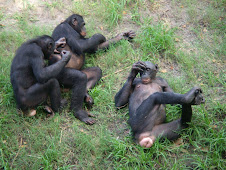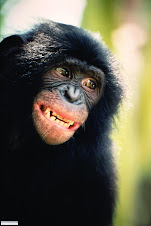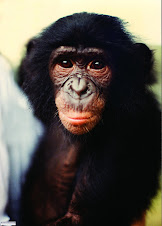 This photo is of a young brush-tailed African porcupine. Newborns are precocial, being well-developed, but of small size. They are born with soft hair that hardens over a week or two. This animal weighed about a pound, and already had the quill development of an adult. The brush-tailed porcupine is not well known outside of west and central Africa where it ranges, because it is rarely seen in captivity. An adult weighs six to eight pounds, while the better known black and white African crested porcupine is much larger, at 40 to 60 pounds.
This photo is of a young brush-tailed African porcupine. Newborns are precocial, being well-developed, but of small size. They are born with soft hair that hardens over a week or two. This animal weighed about a pound, and already had the quill development of an adult. The brush-tailed porcupine is not well known outside of west and central Africa where it ranges, because it is rarely seen in captivity. An adult weighs six to eight pounds, while the better known black and white African crested porcupine is much larger, at 40 to 60 pounds.Unlike its name "porcupine" which means "quill pig," porcupines are not pigs, but rodents. Due to their taste for roots and tubers, they have a light, sweet meat that is favored by local populations, and they are frequently hunted. In Zaire, porcupines were flushed by dogs, to be captured by small hoop nets on the trails that the animals would use as escape routes.
The meat is so favored that one project in Gabon has tried farm raising brush-tailed porcupines, with limited success. The fact that they only produce one or two offspring, with a relatively long gestation of 100 or more days is not promising for efficient production (compared to rabbits, for example, that can produce 6 to 10 young after only a one month gestation).
The brush-tailed porcupine has short quills and a tuft of flattened, pale quills at the end of its tail. Like all porcupines, its defensive behavior is to turn around, stamp its front feet and raise and shake the quills to produce a menacing rattle and increase its body "size." The animal will also hiss, and growl. Finally, if the aggressor is not convinced, the porcupine will back up rapidly and ram the offender, leaving some quills behind.
The brush-tailed porcupine lives in burrows, and is strictly nocturnal. It travels in small family groups and is mostly terrestrial, but can climb, or swim, with webbed feet. In researching the natural history of the species, the most interesting fact I uncovered was that a group of porcupines is called a "prickle," an apropos description for such an unusual evolutionary survival tactic.
Photo by D. Messinger













No comments:
Post a Comment